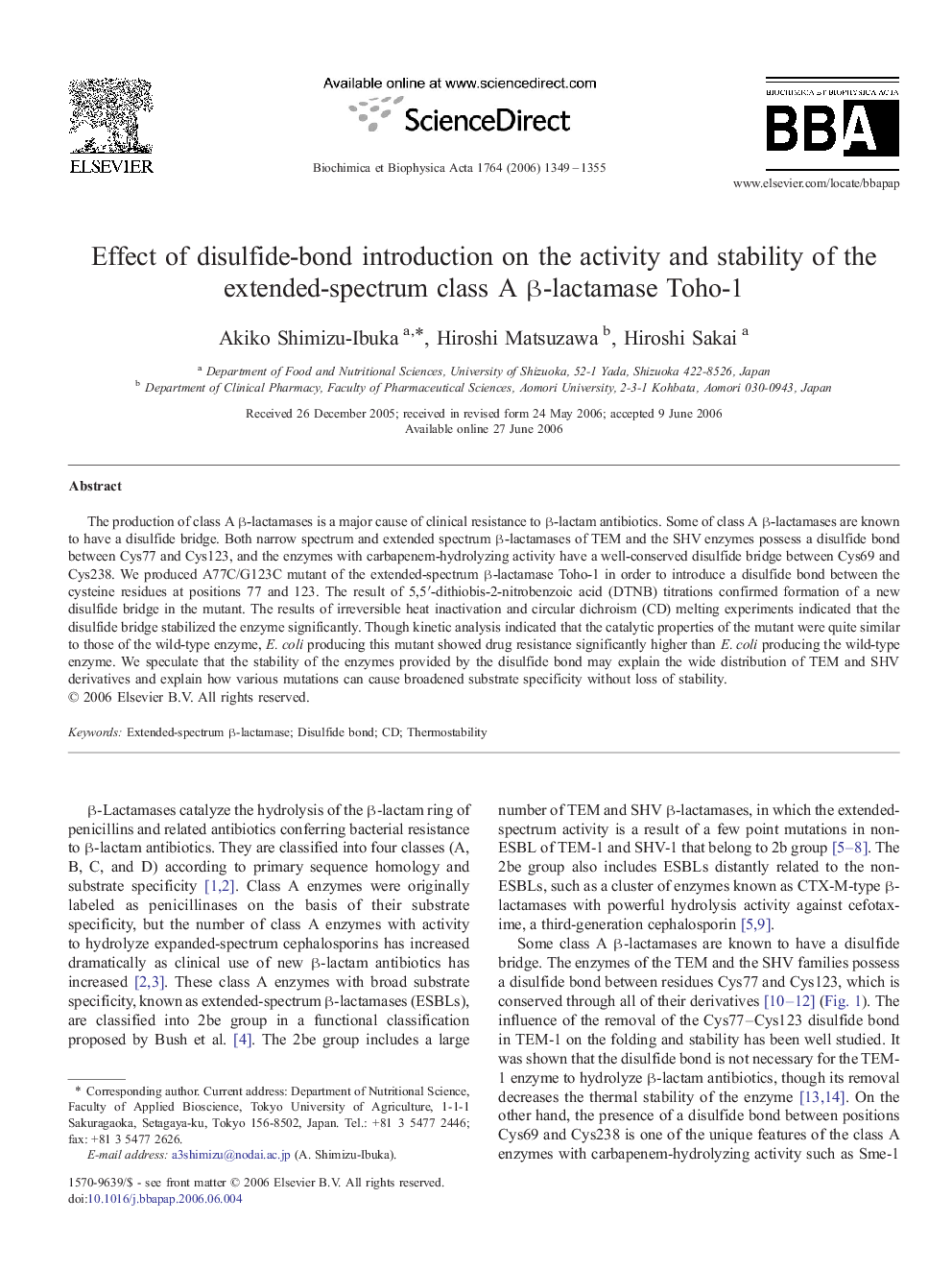| Article ID | Journal | Published Year | Pages | File Type |
|---|---|---|---|---|
| 1179573 | Biochimica et Biophysica Acta (BBA) - Proteins and Proteomics | 2006 | 7 Pages |
The production of class A β-lactamases is a major cause of clinical resistance to β-lactam antibiotics. Some of class A β-lactamases are known to have a disulfide bridge. Both narrow spectrum and extended spectrum β-lactamases of TEM and the SHV enzymes possess a disulfide bond between Cys77 and Cys123, and the enzymes with carbapenem-hydrolyzing activity have a well-conserved disulfide bridge between Cys69 and Cys238. We produced A77C/G123C mutant of the extended-spectrum β-lactamase Toho-1 in order to introduce a disulfide bond between the cysteine residues at positions 77 and 123. The result of 5,5′-dithiobis-2-nitrobenzoic acid (DTNB) titrations confirmed formation of a new disulfide bridge in the mutant. The results of irreversible heat inactivation and circular dichroism (CD) melting experiments indicated that the disulfide bridge stabilized the enzyme significantly. Though kinetic analysis indicated that the catalytic properties of the mutant were quite similar to those of the wild-type enzyme, E. coli producing this mutant showed drug resistance significantly higher than E. coli producing the wild-type enzyme. We speculate that the stability of the enzymes provided by the disulfide bond may explain the wide distribution of TEM and SHV derivatives and explain how various mutations can cause broadened substrate specificity without loss of stability.
